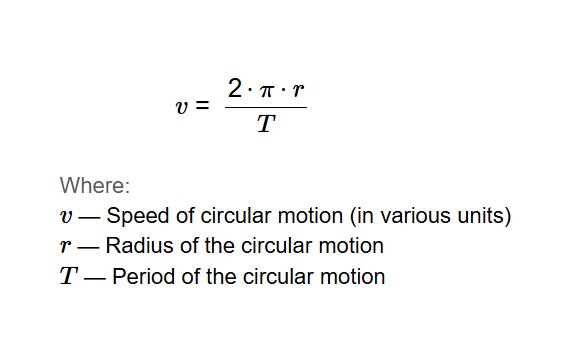 Home
Home
 Back
Back

Definition: This calculator computes the speed (\( v \)) of an object in circular motion based on its radius (\( r \)) and period (\( T \)).
Purpose: It is used in physics to determine the tangential speed of an object moving in a circular path, applicable in mechanics, astronomy, and engineering.
The calculator uses the relationship:
Where:
Explanation: Enter the period and radius in the chosen units, and the calculator computes the speed. Results are displayed with 5 decimal places, using scientific notation if the value exceeds 100,000 or is less than 0.0001. For default inputs (\( T = 1 \, \text{day} \), \( r = 384,400 \, \text{km} \)), which approximates the Moon’s orbit around Earth, the calculated speed \( v \) is approximately 1,019.16759 m/s.
Details: Calculating the speed of circular motion is essential for understanding the dynamics of rotating or orbiting objects, aiding in the design of satellites, amusement rides, and other systems involving circular motion.
How do I find the speed of an object in circular motion?
Measure the period of the motion in seconds and the radius in meters. Compute the speed using the formula \( v = \frac{2 \cdot \pi \cdot r}{T} \). The result will be in meters/second.
What does the speed of circular motion represent?
The speed of circular motion represents the tangential speed of the object, which is the linear speed along the circular path, determined by the circumference of the path divided by the period.
What is the formula for the speed of circular motion?
The formula for the speed of circular motion is \( v = \frac{2 \cdot \pi \cdot r}{T} \), where \( r \) is the radius, and \( T \) is the period. The standard unit for speed is meters/second (m/s).